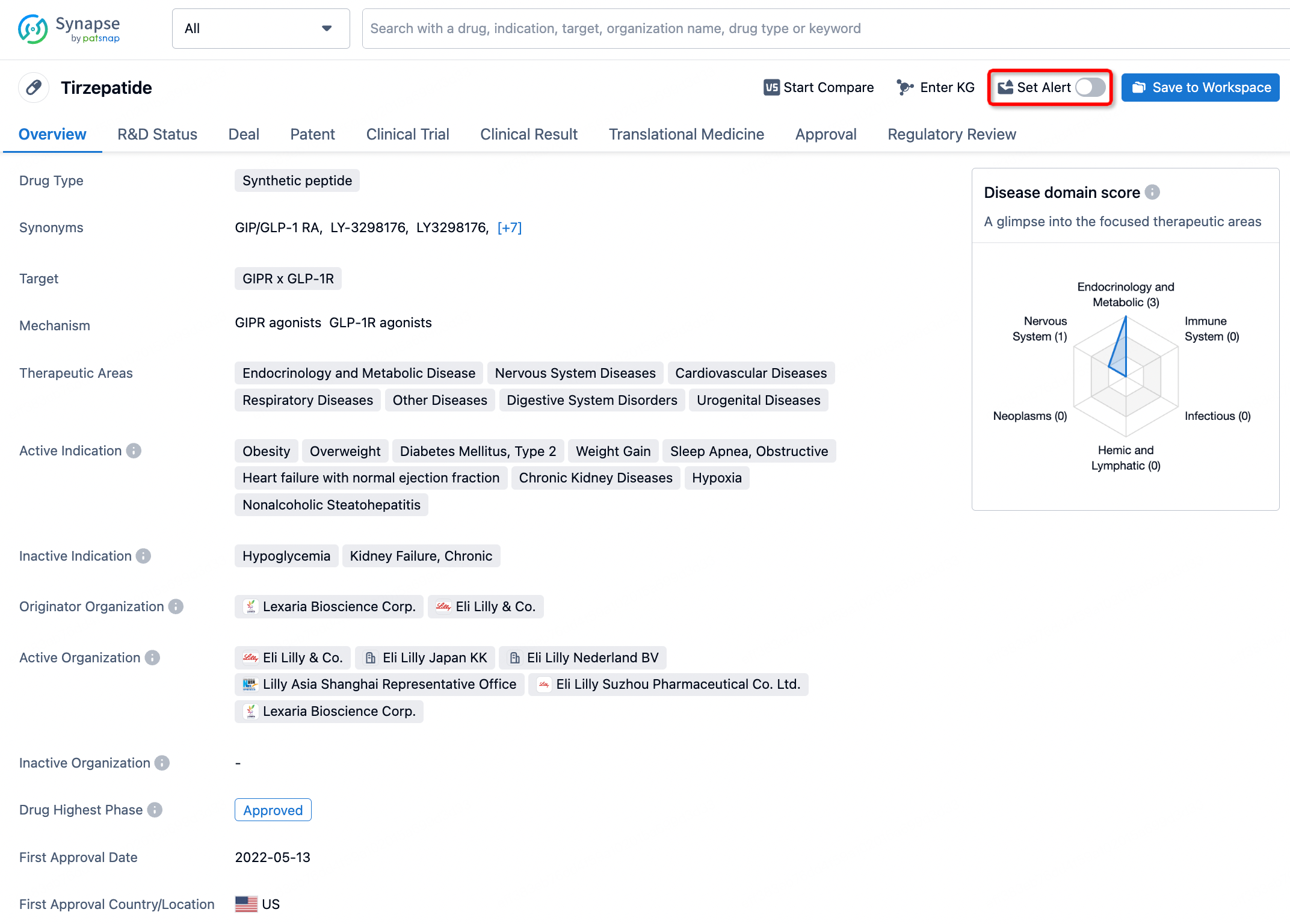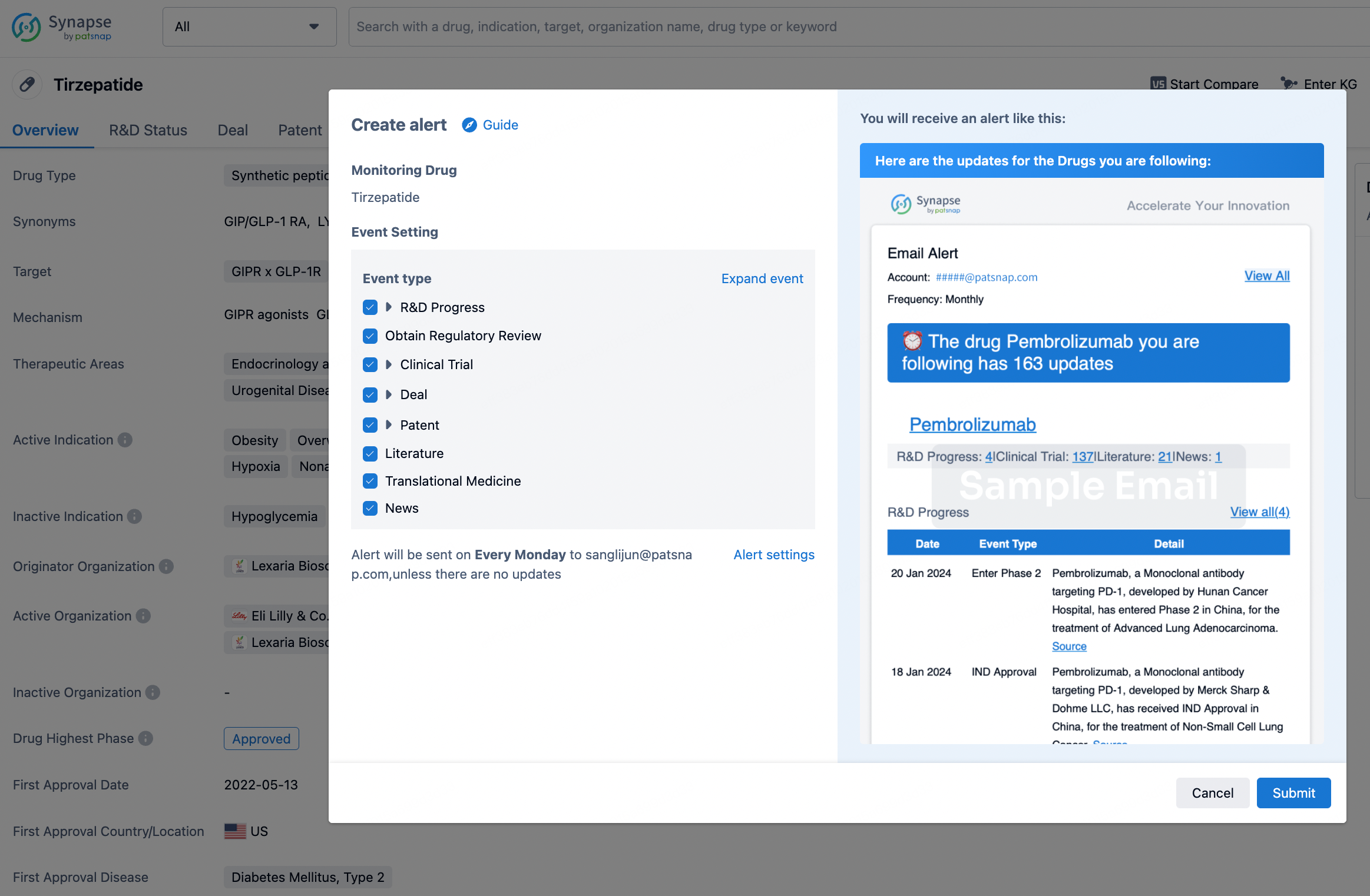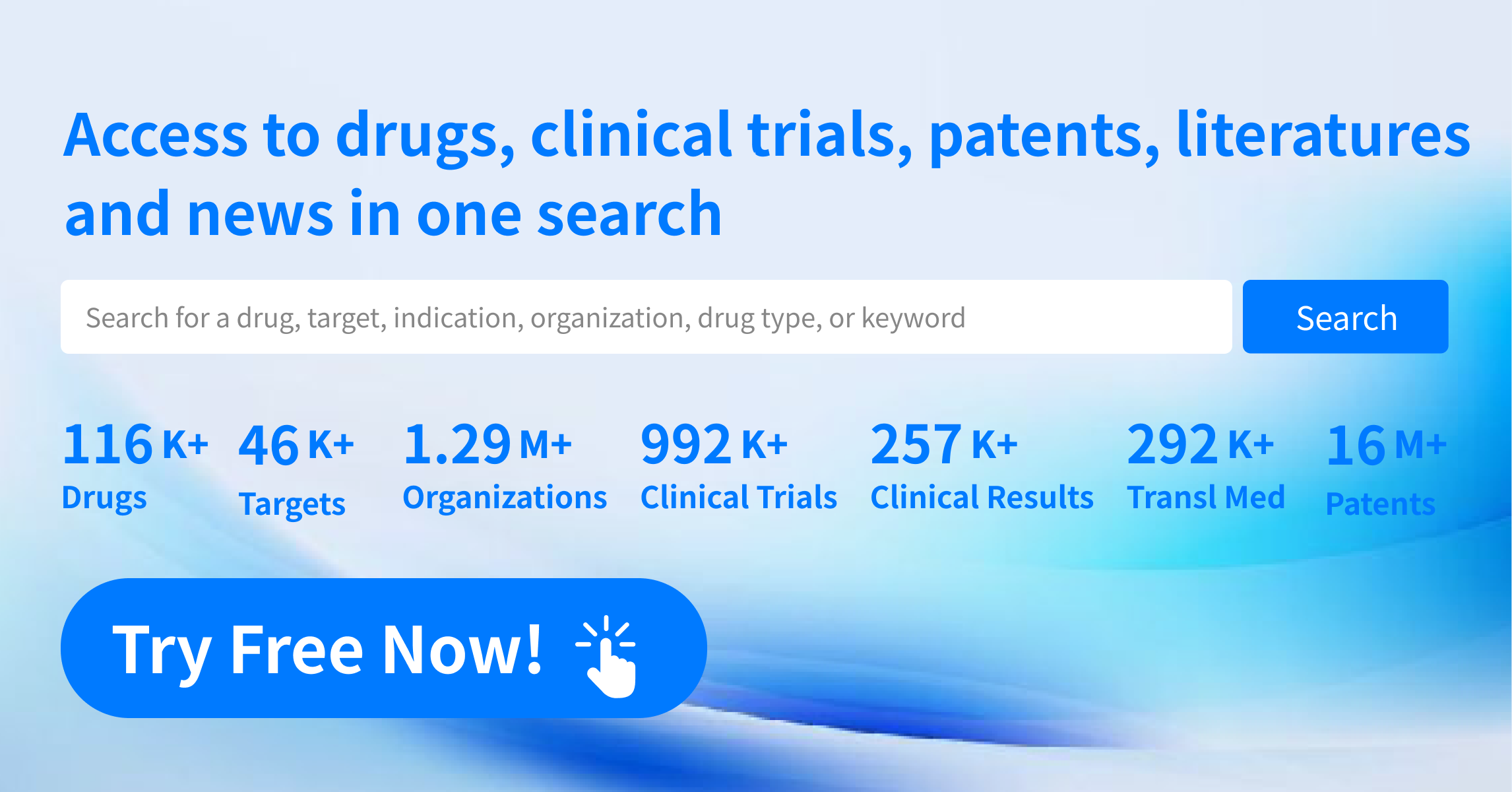Request Demo
What is Fluocortin Butyl used for?
15 June 2024
Introduction to Fluocortin Butyl:
Fluocortin butyl, a synthetic corticosteroid, is marketed under various trade names and is known for its strong anti-inflammatory properties. It is frequently utilized in the treatment of various dermatological conditions, where inflammation is a significant component. While the drug is primarily available under prescription, its efficacy in managing conditions like eczema, dermatitis, and other inflammatory skin disorders has led to widespread recognition in medical circles.
The drug targets specific receptors in the body, leading to a reduction in inflammation and immune responses. Several research institutions have conducted studies on Fluocortin butyl, and their collective findings have contributed to our understanding of how this corticosteroid functions. Fluocortin butyl is classified as a medium-potency corticosteroid, making it versatile in its application to various conditions without the extreme side effects associated with more potent steroids.
From a clinical perspective, Fluocortin butyl's indications include treating skin disorders characterized by inflammation and itching. The drug has been the subject of numerous studies, particularly focusing on its efficacy and safety profile. Research progress continues to be made, with ongoing studies exploring its long-term effects and potential new therapeutic applications.
Fluocortin Butyl Mechanism of Action:
Fluocortin butyl works by mimicking the effects of naturally occurring corticosteroids produced by the adrenal glands. It binds to specific glucocorticoid receptors in the cytoplasm of target cells. Once bound, the receptor-steroid complex translocates to the cell nucleus, where it modulates the expression of specific genes responsible for inflammatory responses.
The primary action of Fluocortin butyl involves inhibiting the synthesis of various pro-inflammatory cytokines and mediators. By suppressing these signaling molecules, the drug effectively reduces inflammation, redness, and swelling. Additionally, Fluocortin butyl stabilizes lysosomal membranes, preventing the release of enzymes that contribute to tissue damage and inflammation.
Moreover, Fluocortin butyl reduces capillary permeability, thereby minimizing the leakage of fluids into tissues, which further reduces swelling and inflammation. This multifaceted approach ensures that the drug can effectively manage inflammatory skin conditions at multiple levels, providing symptomatic relief and allowing the skin to heal.
How to Use Fluocortin Butyl:
Fluocortin butyl is typically administered topically, which means it is applied directly to the skin in the form of a cream, ointment, or lotion. The frequency and duration of application depend on the severity of the condition being treated and the specific instructions provided by a healthcare professional.
For most inflammatory skin conditions, Fluocortin butyl is applied once or twice daily. It is crucial to follow the prescribed dosage and not to exceed the recommended amount, as overuse can lead to side effects. The medication should be applied as a thin layer to the affected areas and gently rubbed in. It is essential to wash hands thoroughly before and after application to avoid spreading the medication to unintended areas.
The onset of action for Fluocortin butyl can vary. Patients might notice an improvement in symptoms within a few days of starting treatment, although it may take longer for more severe conditions. It's important to continue using the medication for the full prescribed duration, even if symptoms improve, to ensure the underlying condition is fully treated.
What is Fluocortin Butyl Side Effects:
Like all medications, Fluocortin butyl can cause side effects, although not everyone will experience them. Common side effects include skin irritation, dryness, and redness at the site of application. These are usually mild and tend to resolve on their own as the body adjusts to the medication.
More serious side effects, although rare, can occur with prolonged use or when the drug is applied over large areas of the skin. These may include thinning of the skin (atrophy), stretch marks, and changes in skin pigmentation. In some cases, systemic absorption of the drug can lead to side effects typically associated with oral corticosteroids, such as suppression of the hypothalamic-pituitary-adrenal (HPA) axis, which can affect hormone levels and metabolism.
Contraindications for the use of Fluocortin butyl include individuals with known hypersensitivity to corticosteroids or any of the components in the formulation. It is also contraindicated in patients with viral, fungal, or bacterial skin infections unless appropriate antimicrobial therapy is also administered. Caution is advised when using the medication in pregnant or breastfeeding women, and it should only be used if the potential benefits outweigh the risks.
What Other Drugs Will Affect Fluocortin Butyl:
Drug interactions can affect how medications work or increase the risk of serious side effects. While Fluocortin butyl is applied topically and has lower systemic absorption than oral corticosteroids, interactions can still occur, particularly if used over large areas or for extended periods.
Drugs that may interact with Fluocortin butyl include other corticosteroids, both topical and systemic. Using multiple corticosteroids can increase the risk of side effects, including suppression of the HPA axis and other systemic effects. Patients should inform their healthcare provider of all the medications they are using, including over-the-counter products and supplements.
Immunosuppressive drugs can also interact with Fluocortin butyl, potentially enhancing the effects of both medications and increasing the risk of infections or other immune-related issues. Additionally, certain antifungal and antiviral medications may alter the metabolism of corticosteroids, affecting their efficacy and safety.
Patients with pre-existing medical conditions, such as diabetes, should use Fluocortin butyl with caution, as corticosteroids can affect blood glucose levels. It is essential to monitor blood sugar levels regularly and adjust medication as needed.
In conclusion, Fluocortin butyl is a valuable medication for managing inflammatory skin conditions. Understanding its mechanism of action, proper usage, potential side effects, and drug interactions is crucial for maximizing its benefits while minimizing risks. Always consult with a healthcare professional before starting or adjusting any medication regimen.
Fluocortin butyl, a synthetic corticosteroid, is marketed under various trade names and is known for its strong anti-inflammatory properties. It is frequently utilized in the treatment of various dermatological conditions, where inflammation is a significant component. While the drug is primarily available under prescription, its efficacy in managing conditions like eczema, dermatitis, and other inflammatory skin disorders has led to widespread recognition in medical circles.
The drug targets specific receptors in the body, leading to a reduction in inflammation and immune responses. Several research institutions have conducted studies on Fluocortin butyl, and their collective findings have contributed to our understanding of how this corticosteroid functions. Fluocortin butyl is classified as a medium-potency corticosteroid, making it versatile in its application to various conditions without the extreme side effects associated with more potent steroids.
From a clinical perspective, Fluocortin butyl's indications include treating skin disorders characterized by inflammation and itching. The drug has been the subject of numerous studies, particularly focusing on its efficacy and safety profile. Research progress continues to be made, with ongoing studies exploring its long-term effects and potential new therapeutic applications.
Fluocortin Butyl Mechanism of Action:
Fluocortin butyl works by mimicking the effects of naturally occurring corticosteroids produced by the adrenal glands. It binds to specific glucocorticoid receptors in the cytoplasm of target cells. Once bound, the receptor-steroid complex translocates to the cell nucleus, where it modulates the expression of specific genes responsible for inflammatory responses.
The primary action of Fluocortin butyl involves inhibiting the synthesis of various pro-inflammatory cytokines and mediators. By suppressing these signaling molecules, the drug effectively reduces inflammation, redness, and swelling. Additionally, Fluocortin butyl stabilizes lysosomal membranes, preventing the release of enzymes that contribute to tissue damage and inflammation.
Moreover, Fluocortin butyl reduces capillary permeability, thereby minimizing the leakage of fluids into tissues, which further reduces swelling and inflammation. This multifaceted approach ensures that the drug can effectively manage inflammatory skin conditions at multiple levels, providing symptomatic relief and allowing the skin to heal.
How to Use Fluocortin Butyl:
Fluocortin butyl is typically administered topically, which means it is applied directly to the skin in the form of a cream, ointment, or lotion. The frequency and duration of application depend on the severity of the condition being treated and the specific instructions provided by a healthcare professional.
For most inflammatory skin conditions, Fluocortin butyl is applied once or twice daily. It is crucial to follow the prescribed dosage and not to exceed the recommended amount, as overuse can lead to side effects. The medication should be applied as a thin layer to the affected areas and gently rubbed in. It is essential to wash hands thoroughly before and after application to avoid spreading the medication to unintended areas.
The onset of action for Fluocortin butyl can vary. Patients might notice an improvement in symptoms within a few days of starting treatment, although it may take longer for more severe conditions. It's important to continue using the medication for the full prescribed duration, even if symptoms improve, to ensure the underlying condition is fully treated.
What is Fluocortin Butyl Side Effects:
Like all medications, Fluocortin butyl can cause side effects, although not everyone will experience them. Common side effects include skin irritation, dryness, and redness at the site of application. These are usually mild and tend to resolve on their own as the body adjusts to the medication.
More serious side effects, although rare, can occur with prolonged use or when the drug is applied over large areas of the skin. These may include thinning of the skin (atrophy), stretch marks, and changes in skin pigmentation. In some cases, systemic absorption of the drug can lead to side effects typically associated with oral corticosteroids, such as suppression of the hypothalamic-pituitary-adrenal (HPA) axis, which can affect hormone levels and metabolism.
Contraindications for the use of Fluocortin butyl include individuals with known hypersensitivity to corticosteroids or any of the components in the formulation. It is also contraindicated in patients with viral, fungal, or bacterial skin infections unless appropriate antimicrobial therapy is also administered. Caution is advised when using the medication in pregnant or breastfeeding women, and it should only be used if the potential benefits outweigh the risks.
What Other Drugs Will Affect Fluocortin Butyl:
Drug interactions can affect how medications work or increase the risk of serious side effects. While Fluocortin butyl is applied topically and has lower systemic absorption than oral corticosteroids, interactions can still occur, particularly if used over large areas or for extended periods.
Drugs that may interact with Fluocortin butyl include other corticosteroids, both topical and systemic. Using multiple corticosteroids can increase the risk of side effects, including suppression of the HPA axis and other systemic effects. Patients should inform their healthcare provider of all the medications they are using, including over-the-counter products and supplements.
Immunosuppressive drugs can also interact with Fluocortin butyl, potentially enhancing the effects of both medications and increasing the risk of infections or other immune-related issues. Additionally, certain antifungal and antiviral medications may alter the metabolism of corticosteroids, affecting their efficacy and safety.
Patients with pre-existing medical conditions, such as diabetes, should use Fluocortin butyl with caution, as corticosteroids can affect blood glucose levels. It is essential to monitor blood sugar levels regularly and adjust medication as needed.
In conclusion, Fluocortin butyl is a valuable medication for managing inflammatory skin conditions. Understanding its mechanism of action, proper usage, potential side effects, and drug interactions is crucial for maximizing its benefits while minimizing risks. Always consult with a healthcare professional before starting or adjusting any medication regimen.
How to obtain the latest development progress of all drugs?
In the Synapse database, you can stay updated on the latest research and development advances of all drugs. This service is accessible anytime and anywhere, with updates available daily or weekly. Use the "Set Alert" function to stay informed. Click on the image below to embark on a brand new journey of drug discovery!
AI Agents Built for Biopharma Breakthroughs
Accelerate discovery. Empower decisions. Transform outcomes.
Get started for free today!
Accelerate Strategic R&D decision making with Synapse, PatSnap’s AI-powered Connected Innovation Intelligence Platform Built for Life Sciences Professionals.
Start your data trial now!
Synapse data is also accessible to external entities via APIs or data packages. Empower better decisions with the latest in pharmaceutical intelligence.


